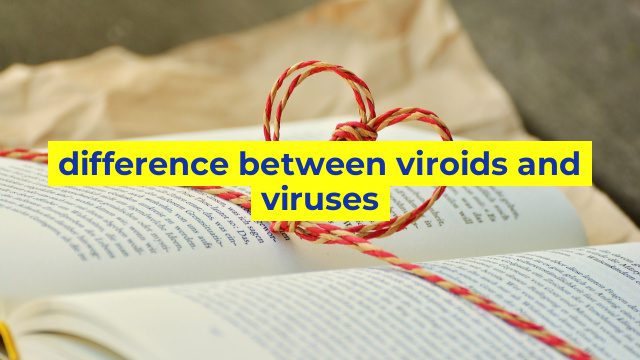The Difference Between Viroids and Viruses – An Overview
If you ask someone about the difference between viroids and viruses, it is highly likely that they will not be able to tell you. While there are similarities between these two infectious agents, there are also significant differences that set them apart. In this article, we will take a closer look at viroids and viruses and explore the differences between the two.
What are Viroids?
Viroids are simple, non-living infectious agents that consist of only a small, circular RNA molecule. Viroids are much smaller in size when compared to viruses and often do not have a protein coat or any other protective structure. Viroids are known to infect plants and cause diseases that result in reduced growth, deformities, and even death of the host plant.
What are Viruses?
Viruses are infectious agents that can infect both plants and animals, including humans. Unlike viroids, viruses are more complex and consist of a protein coat and genetic material, either DNA or RNA. Viruses replicate by injecting their genetic material into the host cell, where it hijacks the cell’s machinery to produce more virus particles. Viruses cause a range of diseases, from the common cold to deadly diseases such as Ebola and HIV.
What are the Key Differences Between Viroids and Viruses?
The key differences between viroids and viruses include their size, structure, and the kind of genetic material they contain. Viruses are much larger and more complex in structure when compared to viroids. Unlike viroids, viruses consist of protein coats that protect their genetic material. Viroids, on the other hand, do not have a protective coat and consist of only a small, circular RNA molecule. Additionally, while viruses can infect both plants and animals, viroids only infect plants.
Conclusion
In summary, viroids and viruses are two distinct infectious agents that differ significantly in their size, structure, and genetic makeup. Viroids are simple, non-living infectious agents that consist of only a small, circular RNA molecule and infect only plants, while viruses are complex organisms that can infect both plants and animals, including humans. Understanding the difference between these two entities is essential in developing appropriate strategies for controlling their spread and preventing the diseases they cause.
Table difference between viroids and viruses
| Viroids | Viruses |
|---|---|
| Small, circular RNA molecules | Small, infectious agents containing DNA or RNA |
| Do not have a protein coat | Have a protein coat called a capsid |
| Do not encode proteins | Encode proteins to replicate and infect |
| Can infect plants only | Can infect both animals and plants |
| Can cause disease and impact crop yields | Can cause a range of diseases in humans and animals |


